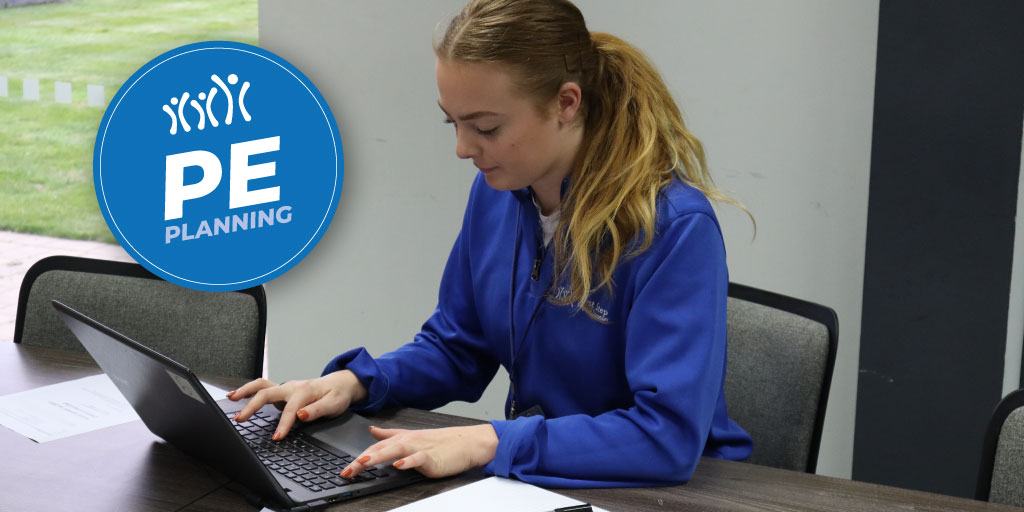The average PE lead teacher may find themselves pondering life at their computer when PE planning time comes around. Staring blankly at those empty boxes with PE Premium in hand is a situation most of us would want to avoid. The question is, how can we fill that spreadsheet with a comprehensive array of physical activity?
Planning for the year should include pupil progression, high-quality PE lessons, and enrichment activities, alongside realistic plans for teaching resources and absences. Put together it can seem like an unscalable mountain but with a methodical approach, you can keep a programme of activities for children central to your goals.
Physical activity targets
As anyone who’s paid any attention to the news will know, the children’s physical activity landscape is changing. Restrictions put physical activity on the backfoot and now all schools are playing catch-up. The good news is that the government’s continued investment in school sport, facilities, and the PE Premium is a strong indication that they are supportive of physical activity recovery in schools.
Take an objective for Key Stage 1 pupils, for example. Children are expected to have mastered the basics of running, jumping, throwing, and catching by the end of that key stage with skills such as balance, agility, and coordination, providing the foundation. On the surface, getting the average 7-year-old to run less is probably the far more difficult task here. But wrapped up in those basics, are real milestones. Balance to prevent falls, stopping and starting at will, and weaving in and out of obstacles are essential to the achievement of the objective as a whole.
The mastery of these will contribute to connecting them with more advanced skills such as throwing, catching, and jumping while running. With those milestones understood, you can begin the process of adding activities, games, and sports to your plan, giving it shape and focus.
Long-term planning and prediction
A year may seem like a long time but as we all know, it can go by in a flash. Creating this plan involves setting and adhering to targets for the physical activity levels of your pupils. It also means planning for the unexpected.
For instance, the £10.1 million fund for school and public sports facilities could add further complications. Yet new equipment or access to facilities should enhance your activity plan, not detract from it. The same goes for the other side of the equation; there needs to be some flexibility built into your plan to accommodate ad hoc changes to PE areas including developments and upgrades.
In around a third of schools, physical subjects such as Music and PE took a backseat to academic subjects mainly due to scheduling issues. Lack of space, cleaning apparatus and teacher absences derailed PE for pupils already lacking any outdoor activity at home or at school. The time that should have been spent actively, was re-directed into extra-academic learning. Without proper planning, physical activity can become a challenging thing to execute, when in fact it has the potential to enrich all academic subjects.
Pupil Participation
We know children have lots of energy, so PE planning needs to direct that energy into great sports experiences. Providing positive PE experiences is key to ensuring participation levels remain high.
Good PE planning can hit multiple targets for schools. Sports days, for example, institute whole school engagement and contribute to accreditations for health, sports, and activity levels. A day packed full of egg and spoon races can bring measured competitive sport as well as whole school awareness of sport and physical activity.
Remember participation can take many forms too. One way is to use PE equipment to produce different participatory outcomes. Children can learn a variety of competitive skills, acting as umpires or set-up crews. These roles can be rotated, allowing all pupils to learn some degree of dispute resolution, and health & safety. Skills that will also contribute towards personal accomplishment and accreditation for them.
CPD for teaching staff
It’s not really surprising that a lot of teachers don’t feel confident teaching PE. You have a class full of excited children and a mandate to teach an unfamiliar sport with less than 5 hours of course instruction. Not ideal!
Yet there’s no need to tackle this on your own. Some schools invest in PE providers but find themselves just as clueless when they leave. Personal development for teachers (CPD) can help enhance what is already a great skillset into a confident one but you need the right partner.
That’s why First Step PE has collated an array of options to help you make the right decisions for your school. Work with us, and we’ll turn your schools’ goals and targets into a comprehensive physical activity plan with a dedicated PE Manager. Not just PE providers, we offer a range of CPD support, enrichment, and wellbeing options that will hit cross-curricular targets for your whole school.
Why tackle a spreadsheet alone when you can make that first step with First Step PE?



